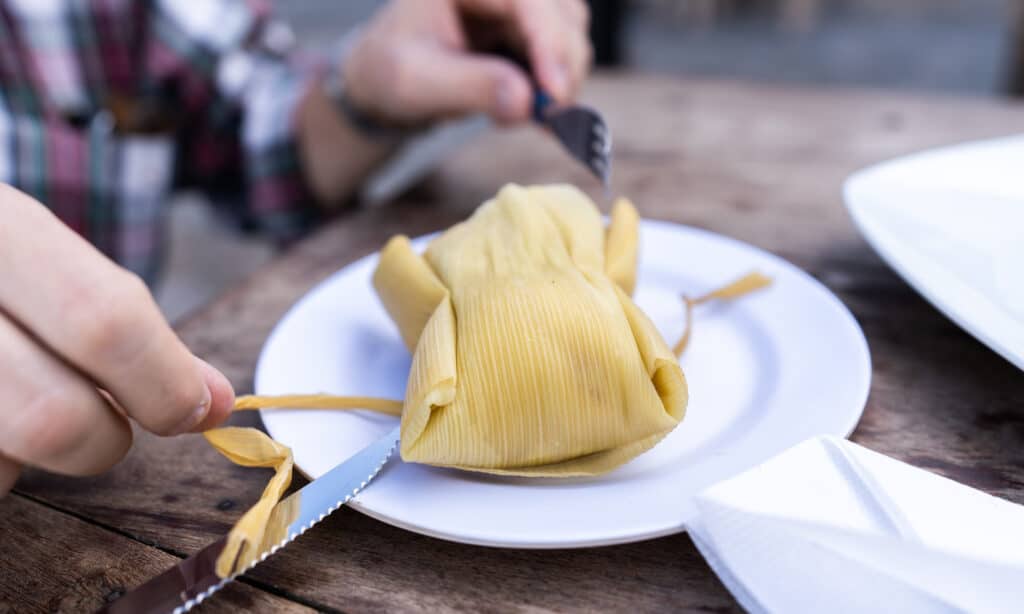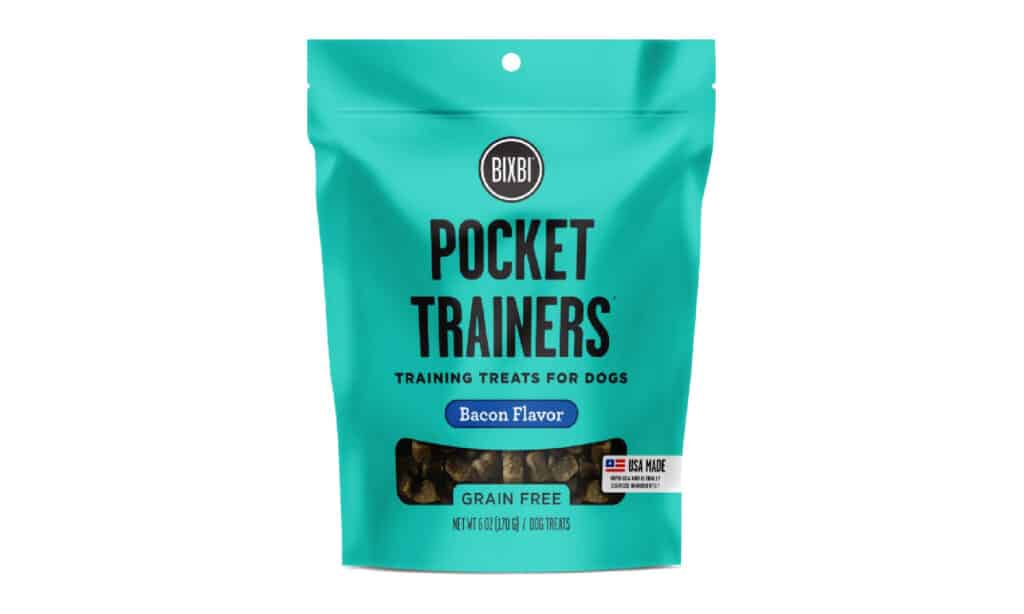Tamales are a delicious and popular food item in many cultures, but if you’re a dog owner, you may be wondering if it’s safe to share this treat with your furry friend. While some human foods can be dangerous or even toxic to dogs, the answer to whether or not dogs can eat tamales isn’t necessarily straightforward. In this blog post, we’ll take a closer look at the ingredients in tamales and what they mean for your dog’s health. Whether you’re considering sharing your tamale with your pup or simply curious about their dietary needs, read on to learn more!

What Are Tamales?
Tamales are a traditional Latin American dish made from masa (a type of dough made from corn) that is filled with various ingredients, such as meat, cheese, vegetables, or chili peppers. The filling is then wrapped in corn husks and steamed until it’s fully cooked.
The history of tamales can be traced back to the ancient Mayan and Aztec civilizations in Mexico, where they were a staple food source. Today, tamales are enjoyed in many Latin American countries and regions, and they have become a popular food item in the United States as well.
Tamales come in a variety of flavors and can be served as a main course, appetizer, or snack. Some popular types of tamales include chicken, pork, beef, cheese and jalapeño, and sweet tamales with fruit or cinnamon.
While tamales are a tasty and satisfying food for humans, it’s important to consider whether they’re safe for our furry friends to eat. In the next section, we’ll explore whether dogs can safely consume tamales and what potential risks there may be.
Can Dogs Have Tamales?
While tamales are a delicious and popular food item, they may not be the best choice for your furry friend. Dogs have different nutritional needs than humans, and certain ingredients in tamales may not agree with their digestive systems or could even be harmful to their health.
For example, tamales often contain spices, such as garlic and onion, which can be toxic to dogs in large quantities. Additionally, the masa dough used to make tamales is high in carbohydrates and can be difficult for some dogs to digest, leading to upset stomach, diarrhea, or even pancreatitis.
If you’re considering giving your dog a small bite of tamale, it’s best to err on the side of caution and avoid it altogether. Instead, consider giving your pup a treat specifically designed for dogs or some plain cooked meat or vegetables.

Harmful Ingredients in Tamales:
While tamales can be a delicious treat for humans, they often contain ingredients that can be harmful to dogs. Here are some of the main ingredients in tamales that you should be cautious about feeding your furry friend:
- Garlic and onion: Garlic and onion can be toxic to dogs in large amounts, often used to season tamales. They contain compounds that can damage dogs’ red blood cells and lead to anemia.
- Spices: In addition to garlic and onion, many tamales are seasoned with spices like cumin, paprika, and chili powder. Small amounts of spices are not toxic, but too much can cause stomach upset or other digestive issues in dogs.
- Masa dough: The dough used to make tamales is made from cornmeal, which is high in carbohydrates. Small amounts of masa are safe for dogs, but too much can cause digestive issues.
- Filling ingredients: Tamale fillings like raisins, avocado, or chocolate can be toxic to dogs.
In general, it’s best to avoid feeding your dog tamales or any other human food that contains potentially harmful ingredients. If you want to give your dog a special treat, there are plenty of dog-friendly foods and treats available that are formulated specifically for their dietary needs.
Safe Ingredients in Tamales:
Here are some safe ingredients in tamales that dogs can enjoy:
- Plain meat: Use plain, unseasoned meat as a filling for your dog’s tamale if you’re making tamales at home. Chicken, beef, and pork are all good options.
- Vegetables: Carrots, green beans, and sweet potatoes are safe and tasty veggies for dogs in a dog-friendly tamale.
- Cheese: In moderation, cheese can be a safe and delicious addition to a dog’s tamale. Stick to plain, unsalted varieties like mozzarella or cheddar.
It’s important to remember that dogs have different nutritional needs than humans, so even safe ingredients should be fed in moderation. If you have any concerns about your dog’s diet or health, be sure to consult with your veterinarian before making any changes to their diet or feeding them any new foods.
What Signs To Watch For If Your Dog Accidentally Ate A Lot of Tamales?
Monitor dog for symptoms after eating tamales and contact vet if symptoms persist or worsen. Here are some of the most common signs to look out for:
- Vomiting: If your dog ate a large amount of tamales, they may start vomiting or retching. This could be a sign that their digestive system is struggling to process the food.
- Diarrhea: Loose or watery stools in dogs may indicate digestive upset.
- Loss of appetite: Sick dogs may have reduced appetite and drinking less than usual due to upset stomach.
- Lethargy: If your dog is feeling unwell, they may be more tired or less active than usual.
- Abdominal pain: Signs of belly pain in dogs may include whining, panting, and avoidance of touch.
If you notice any of these signs after your dog has eaten tamales, it’s important to monitor them closely and contact your veterinarian if their symptoms persist or worsen. In some cases, your vet may recommend treatment to help alleviate your dog’s symptoms or prevent further complications.

When or If You Should Go To The Vet?
Monitor your dog closely and contact a vet if they show symptoms after eating a lot of tamales. Keep an eye on your dog’s digestion after eating tamales; see a vet if symptoms persist or worsen.
It’s especially important to seek veterinary attention if your dog has pre-existing health conditions that could be exacerbated by the tamales or if you’re unsure whether or not they have eaten something toxic. Bring a tamale sample and symptoms list to the vet if your dog eats them and requires medical attention. Your vet will be able to provide a proper diagnosis and treatment plan tailored to your dog’s specific needs.
Dog-Friendly Tamale Recipe
Tamale Tail-Waggers
Ingredients:
- 2 cups of corn flour
- 1/2 teaspoon of baking powder
- 1/2 teaspoon of salt
- 1/2 cup of chicken broth
- 1/2 cup of water
- 1/2 cup of cooked and shredded chicken
- 1/4 cup of shredded carrots
- 1/4 cup of chopped green beans
Instructions:
- Preheat the oven to 350°F (180°C).
- In a mixing bowl, combine the corn flour, baking powder, and salt. Mix well.
- Add the chicken broth and water to the bowl and stir until you have a smooth dough.
- In a separate bowl, mix the cooked and shredded chicken, shredded carrots, and chopped green beans.
- Roll out the dough on a flat surface and cut it into 4-inch squares.
- Place a spoonful of the chicken and vegetable mixture in the center of each square.
- Fold the dough over the filling to create a pocket, and then fold in the ends to seal the tamale.
- Place the tamales in a baking dish and bake for 30 minutes or until golden brown.
- Let the tamales cool before serving them to your furry friend.
Note: You can adjust the ingredients according to your dog’s taste and dietary requirements. Also, make sure that the tamales are not too spicy and avoid using onions, garlic, and other harmful ingredients.
Safe Dog-Friendly Alternative to Tamales:
If you’re looking for safe and healthy alternatives to tamales that are suitable for dogs, there are plenty of options to choose from. One idea is to make homemade dog treats using simple and healthy ingredients like peanut butter, pumpkin, or sweet potato. These treats are a great way to reward your furry friend without exposing them to harmful or toxic ingredients.
Raw vegetables like carrots, green beans, or broccoli can also make a tasty and nutritious snack for dogs. They are low in calories and high in nutrients, making them a good choice for dogs of all sizes and ages.
Another option is to offer your dog a small piece of lean, cooked meat like chicken, turkey, or beef. Just be sure to remove any bones or fat before serving it to your dog.
Fruits such as apples, bananas, or blueberries can also be a healthy and delicious snack for dogs when given in moderation. However, be sure to remove any seeds or pits and cut the fruit into small, bite-sized pieces.
Lastly, you can also purchase commercial dog treats that are made from natural and high-quality ingredients. Be sure to read the labels and avoid treats that contain fillers or artificial additives.
Remember to always feed your dog treats in moderation and to consider their individual dietary needs and preferences. It’s also a good idea to consult with your veterinarian if you have any concerns or questions about your dog’s diet or health.
Healthy Store-Bought Options:
In conclusion, while tamales can be a delicious treat for humans, they may not be the best choice for dogs. Certain ingredients in tamales, such as garlic, onion, and spices, can be harmful to dogs, and the high carbohydrate content of masa dough can also cause digestive issues. If sharing a tamale with your dog, avoid harmful ingredients and watch for digestive issues.
Safe and healthy dog-friendly alternatives to tamales include homemade treats, raw veggies, lean meats, fruits, and natural commercial dog treats. By choosing these options, you can reward your dog with a tasty treat without putting their health at risk.
As always, it’s important to consult with your veterinarian if you have any concerns or questions about your dog’s diet or health. By working together with your vet and providing your dog with a balanced and nutritious diet, you can help ensure that they stay happy and healthy for years to come.
~Lindsie



